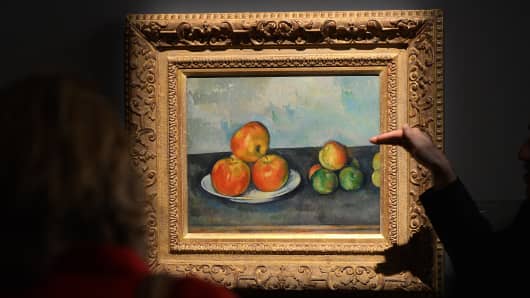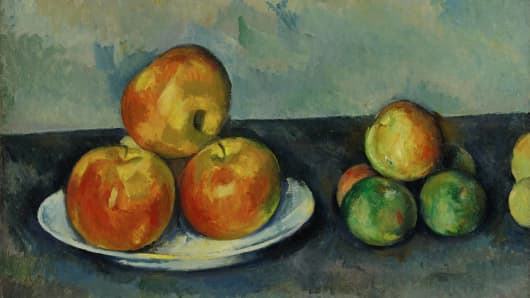The world's largest auction houses will host "blockbuster" sales of contemporary art this week, as buyers' tastes shift away from pre-19th century "Old Masters," a fine art expert told CNBC.
While Sotheby's pocketed a solid $230 million at its Impressionist auction last Tuesday, this week's auctions of contemporary art should top that, said Phillip Hoffman, who heads the Fine Art Fund Group.
(Read More: Cezanne and Modigliani Push Sotheby's Impressionist and Modern Art Sale to $230 Million)
"This coming week we are going to see some blockbuster sale results in the contemporary sales. I think the contemporary is going to outshine the Impressionist," Hoffman told CNBC on Friday.
"In the old days, Old Masters were the number one, Impressionists were along there, and then as a small third came the contemporary market. "
"Now that has all turned around and the fashion and the focus and all the big bidding is going to happen on Tuesday and Wednesday night."
Sotheby's and Christie's will both host major auctions of post-war and contemporary art this week, as New York's spring auction season continues. Masterpieces by Jackson Pollock, Roy Lichtenstein and Jean-Michel Basquiat will come under the hammer at both auctions, while Sotheby's auction on Tuesday evening will also feature Andy Warhol, Francis Bacon, Yves Klein, Gerhard Richter and Mark Rothko.
"Richter and Basquiat are going to set world record prices," said Hoffman.
"Ten years ago you would not see anybody paying $30 or $40 million for those types of pictures. Now they are exceeding prices you would see for a very nice Cezanne," said Hoffman.
A 19th century still life by Paul Cezanne entitled "Les Pommes" sold for $41.6 million at Sotheby's' auction last week.
"The Impressionist market is extremely strong and good pictures make big money," Hoffman added.
Hoffman noted there are "three or four" bidders around the world who are prepared to pay $5-$40 million for top pictures.
(Read More: Art Not Only for '1 Percent', Says Christie's Chief)
"The Russians are in there and one or two very wealthy Asian families are bidding. Obviously, some of the big collectors, like the hedge fund managers, are buying again, and people like the Fine Art Fund," he said.




